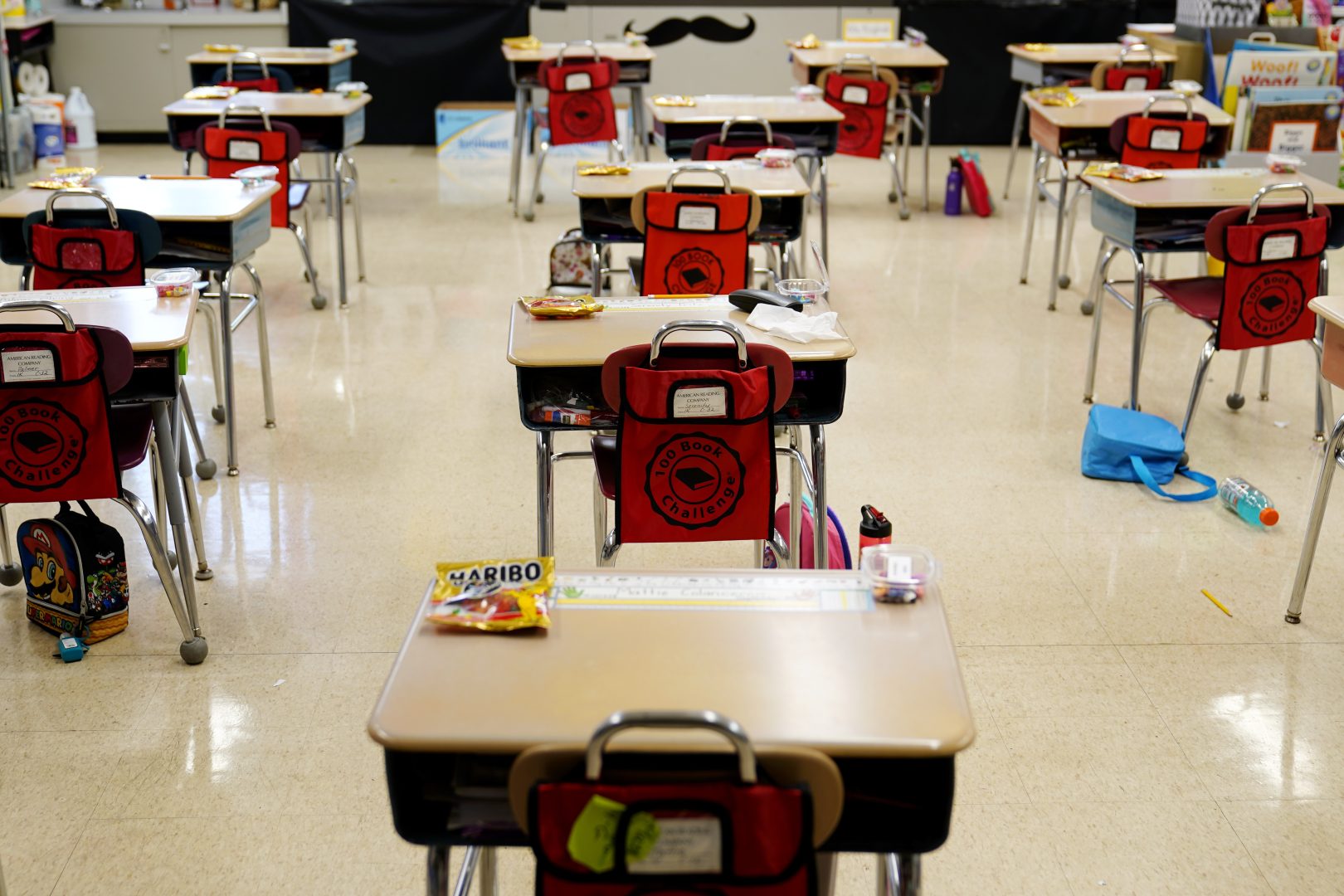
Matt Slocum / AP Photo

Matt Slocum / AP Photo

Matt Slocum / AP Photo
School districts in the midstate – and across Pennsylvania – are facing teacher and staff shortages, according to the Pennsylvania Department of Education and state teacher advocacy organizations.
The state has had a 70% percent decline in certifications for new teachers. Ten years ago, Pennsylvania issued certifications for 20,000 new teachers. Last year, the state issued around 6,000.
How districts experience teacher and support staff shortages often depends on where they are and how many students they serve, a statewide teachers union says.
“What we have found is that urban school districts, large and small, are experiencing the most acute shortages of staff,” said Chris Lilienthal, spokesperson for Pennsylvania State Education Association. “They’re the ones having the most difficulty filling staff positions, I should say, as well as very rural districts. Suburban districts seem to be doing a little bit better.”
In the midstate, two districts are grappling with the problem in different ways.
Harrisburg School District–a district that covers the city of Harrisburg and serves more than 6,000 students, announced in August that one of its middle schools, Rowland Academy, is having shorter school days.
The district has 34 instructional vacancies overall, including five at Rowland.
“We are deeply sorry that despite strong recruiting efforts, we do not have enough teachers to adequately staff a full day of in-person instruction at the start of school,” Harrisburg School District Superintendent Eric Turman said in a letter to parents. “We are working very hard to recruit additional teachers and staff to allow us to provide full, in-person days of school.”
To tackle the shortage, the district is ramping up its recruitment efforts. It increased salaries for retired teachers who return to the classroom and substitute teachers. In June, the school approved a union contract that would increase starting pay for new teachers. The district is collaborating with 11 universities that have teacher training programs to try to recruit new teachers.
On the western side of the Susquehanna river in Cumberland County, a suburban district that serves over 10,000 students is better-staffed than last year, said David Christopher, Cumberland Valley District’s superintendent.
Over the summer, the district hired 88 professional staff members, including teachers, school nurses and speech pathologists. About 35 of those positions were added because of district growth, but the rest were vacant because of staff turnover.
“We are seeing more turnover than I think we have historically, especially in younger teachers. because I believe that there are lots of opportunities for teachers now to leave the education profession and to become employed in jobs, where the salaries are similar, or maybe even a little bit better.”
Christopher said the district has a shortage of teachers with tech and engineering certificates needed to teach certain courses. Because of that, the district has had to alter course offerings and may have to discontinue courses in the future.
Aside from teachers, districts in Pa. are looking to hire other support staff for other support staff, such as teacher aides, substitutes, psychologists, nurses and custodial staff.
“What many of our members are finding is that because of staffing shortages, because of substitute shortages, they’re losing prep periods, they’re losing that professional development time and that time to collaborate, and it’s adding to their stress levels and contributing to high levels of burnout,” Lilienthal said.
Pennsylvania State Department of Education recently announced a plan to recruit 3,600 teachers more people per year into teacher training programs by 2025.

Sometimes, your mornings are just too busy to catch the news beyond a headline or two. Don’t worry. The Morning Agenda has got your back. Each weekday morning, host Tim Lambert will keep you informed, amused, enlightened and up-to-date on what’s happening in central Pennsylvania and the rest of this great commonwealth.
The days of journalism’s one-way street of simply producing stories for the public have long been over. Now, it’s time to find better ways to interact with you and ensure we meet your high standards of what a credible media organization should be.